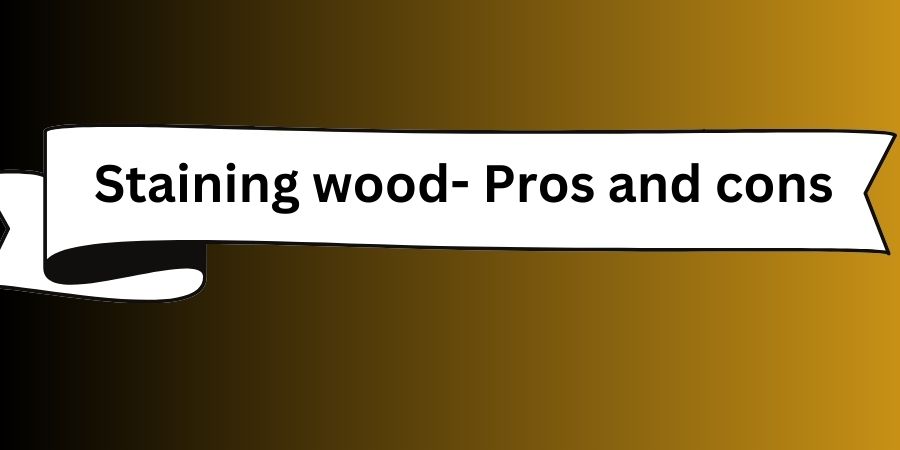Staining wood is a popular technique used to enhance the natural beauty of wood while also providing protection from the elements.
While staining wood can have many benefits, it also has some drawbacks that you should consider before deciding whether or not to stain your wood project.
Here are some pros and cons of staining wood:
Table of Contents
Pros of staining wood
Enhances natural beauty:
One of the biggest pros of staining wood is that it can really bring out the natural beauty of the wood grain. It can give the wood a richer and deeper color, making it look even more beautiful than it did before.
Provides protection:
Another great thing about staining wood is that it can provide protection from the elements. This includes protection from moisture, UV rays, and even insects that might want to damage the wood.
Easy to apply:
Staining wood is generally pretty easy to do. You can use a brush, a rag, or even a spray gun to apply the stain to your wood. This makes it a great DIY project for those who like to work on woodwork projects.
Variety of colors:
Available in a wide variety of colors, so you can choose the perfect shade to match your project. This means that you can get really creative with your staining and make your wood look exactly how you want it to.
Cost-effective:
A cost-effective option than other wood treatments like painting or lamiating. This is because you can do it yourself and you don’t need to hire a professional to do it for you.
Cons of staining wood
Can cover up natural wood grain:
One of the cons of staining wood is that it can cover up the natural wood grain. If you really love the look of the natural wood grain, staining it might not be the best option for you.
Can be difficult to remove:
If you change your mind about the stain color, it can be difficult to remove the stain from the wood. This means that you might be stuck with the stain color even if you don’t like it.
Requires maintenance:
Require some maintenance. You may need to reapply the stain every few years to keep it looking fresh and new.
Can be time-consuming:
A little time-consuming process, especially if you’re staining a large project. This means that you’ll need to set aside some time to complete the project.
May not be necessary:
Depending on the project, staining the wood might not be necessary. If you’re using a type of wood that is already naturally resistant to the elements, you might not need to stain it at all.
Types of Stains
Stains come in many different types, and each has its own unique set of pros and cons. Here are a few of the most common types of stains and their advantages and disadvantages:
Water-based stains: Water-based stains are popular because they are easy to clean up and have a low VOC (volatile organic compounds) content, which means they are environmentally friendly.
Oil-based stains: Oil-based stains are known for their deep, rich colors and ability to penetrate deep into the wood.
Gel stains: Gel stains are thick and easy to apply, which makes them ideal for vertical surfaces.
Good at filling in gaps and cracks in the wood. However, they can be difficult to work with and can result in an uneven finish if not applied properly.
Polyurethane stains: Polyurethane stains are a combination of stain and sealant, which means they provide both color and protection.
Varnish stains: Varnish stains are similar to polyurethane stains, but they provide a softer, more natural finish.
Dye stains: Dye stains are known for their vibrant colors and ability to penetrate deeply into the wood. Available in versatile range of colors.





